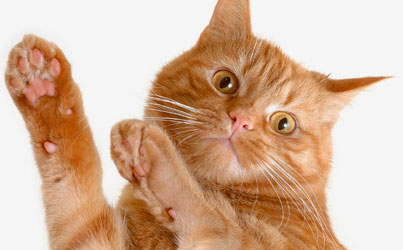
Dog and Cat Breeding
Regulation of breeding
As it is currently left to Member States to legislate on most aspects of breeding and trade of dogs and cats, national requirements, and their enforcement, vary across the EU. The EU Dog & Cat Alliance is deeply concerned about the lack of specific legislation on breeding in EU Member States.
Puppies and kittens bred in poor conditions can experience certain health problems. If puppies and kittens are bred in poor conditions, they may also not be given enough experience of different environments, people or other animals to allow them to develop into confident adult animals. When dogs develop fear-related behaviour problems, this can be a long term threat to their welfare as well as being a problem for owners and one of the top reasons for animals being handed over to a rehoming organisation.
Adult breeding dogs which have been removed from commercial breeding establishments and rehomed as pets have also been reported to have health and behaviour problems.
Under the 2016 EU Animal Health Law, dog and cat breeders are required to be registered. However, this has not been implemented uniformly across the EU, with some breeders not required to register if they only breed a small number of litters per year.
Recommendations
Requirements for breeding dogs and cats should be set at EU level, including:
- - Welfare (education and training/experience of staff, socialisation of puppies and kittens, and requirements for breeding, such as absence of hereditary diseases or conformation);
- - Biosecurity;
- - Licensing (or approval) of breeders and inspections before these are granted.
This would ensure minimum standards across the EU, which is essential to the proper functioning of the EU internal market, to consumer protection and to protection of animal health and welfare.
Further guidance to the Member States on registration of breeders, including which breeders are in the scope of the EU legislation, is also urgently needed.
Breeding for extremes of conformation
Another key concern is the suffering of dogs and cats that develop serious health issues as a result of breeding for extremes of conformation, to exaggerate features such as flat faces, narrowed nostrils, skin folds and protruding eyes.
Certain breeds of dogs and cats are bred this way to make them look more appealing but the reality is that these exaggerated features can lead to a range of health and welfare issues such as breathing difficulties, recurring skin infections, eye diseases and spinal or neurological problems.
Recommendations
The EU Dog & Cat Alliance calls for collaborative EU-wide action to stop the suffering of dogs and cats that develop serious health issues as a result of breeding for extremes of conformation.
The EU Dog & Cat Alliance welcomed the key finding of the European Commission study on the welfare of dogs and cats involved in commercial practices (2015), that the EU should take action to protect companion animal welfare. This is also supported by the views of EU citizens. According to Special Eurobarometer 442, published in March 2016, 74% of Europeans believe the welfare of companion animals should be better protected than it is now.
Furthermore, the Council conclusions on animal welfare, published in December 2019, stated that the Council “INVITES the Commission to assess the need for and impact of new legislation covering all animal species kept in the context of an economic activity for which specific animal welfare legislation does not exist at present, in particular cattle at least six months old, farmed rabbits, pullets, dogs and cats but also, turkeys, broiler and laying hen breeders, sheep, goats and farmed fish”.
In light of this, we call on the Commission to implement the recommendations we have outlined above.


Social
@EUdogsandcats